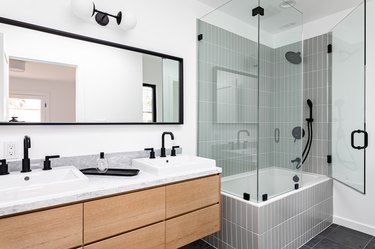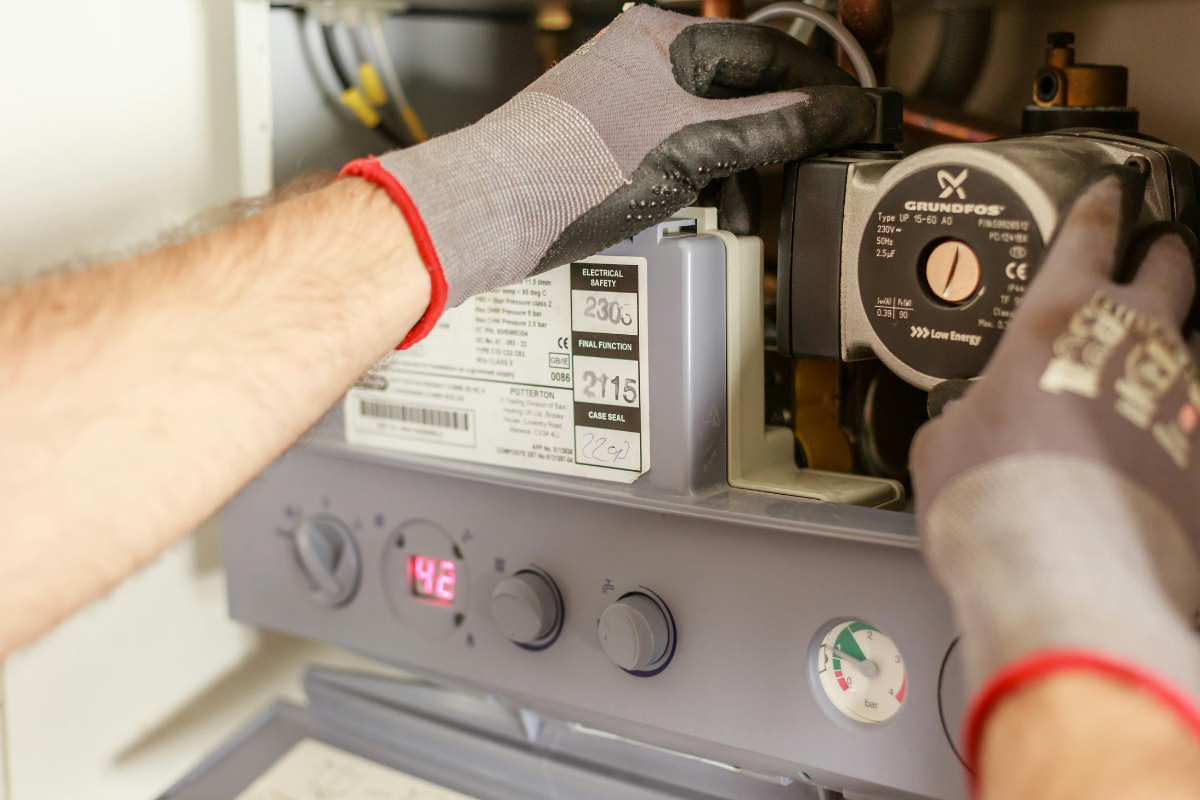How do you really feel in regards to The Future of Plumbing: Trends and Innovations to Watch?

Intro
The pipes sector is going through a transformative phase driven by technical improvements and growing problems for sustainability and effectiveness. This article discovers emerging patterns and advancements forming the future of pipes.
Governing Landscape
Governing frameworks play a crucial function fit the fostering of plumbing developments, with requirements and codes controling every little thing from water efficiency to product safety. As innovations continue to advance, governing bodies need to adapt to make sure consumer security and environmental stewardship.
Future Overview
The future of plumbing is defined by continued development and integration with various other fields such as IoT, renewable resource, and building automation. By welcoming lasting practices, leveraging arising technologies, and focusing on user-centric layout, the plumbing market is poised to attend to the developing demands of culture while lessening its ecological footprint.
Enhanced Truth in Pipes
Increased Fact (AR) technology is reinventing plumbing by providing professionals with real-time visual assistance for fixing and repair service tasks. AR-enabled wise glasses or mobile applications overlay digital details onto the physical setting, assisting plumbing professionals envision pipe designs, identify surprise leaks, and implement repairs with precision.
Effect of 3D Printing
The arrival of 3D printing has presented brand-new possibilities in manufacturing pipes components. From custom-designed components to intricate pipeline installations, 3D printing enables quick prototyping and on-demand production, minimizing lead times and making it possible for better modification in pipes layout.
Health And Wellness Qualities
In action to increased problems for health and safety, plumbing fixtures are incorporating functions such as antimicrobial surface areas, touchless operation, and self-cleaning mechanisms. These advancements not just enhance hygiene yet likewise promote individual convenience and ease.
Hygiene-focused Fixtures
Touchless taps, self-sanitizing toilets, and antimicrobial surface areas are becoming progressively prevalent in household and commercial settings, decreasing the risk of germ transmission and promoting a cleaner, healthier environment.
Water Top Quality Surveillance
Developments in water top quality surveillance technologies allow home owners to monitor the pureness and security of their water in real-time. Smart water high quality sensing units can detect pollutants, pH degrees, and temperature level variations, equipping users to take aggressive steps to make sure water safety.
Remote Plumbing Providers
Remote diagnostics and digital help are transforming the way pipes services are supplied. Through video conferencing and remote accessibility technologies, plumbings can troubleshoot problems, provide assistance for do it yourself fixings, and even execute remote inspections, using better ease of access and convenience to home owners.
Challenges and Opportunities
While plumbing technologies hold enormous guarantee, they additionally present difficulties such as data personal privacy issues, regulative compliance, and the requirement for labor force training. Attending to these obstacles needs partnership between industry stakeholders and regulative bodies to guarantee risk-free and accountable application of brand-new modern technologies.
Smart Pipes Equipments
Including smart modern technology into plumbing systems makes it possible for remote tracking, leak discovery, and automated upkeep. Smart sensing units and IoT (Web of Things) devices permit property owners and plumbing professionals to monitor water usage and identify concerns in real-time, bring about extra effective source administration and aggressive maintenance.
Water Performance Solutions
With enhancing focus on water preservation, innovative options are being created to reduce water waste in plumbing systems. High-efficiency fixtures, greywater recycling systems, and wise irrigation controllers are among the innovations helping consumers decrease their water footprint while maintaining convenience and ease.
Sustainable Materials
The shift in the direction of sustainability encompasses pipes materials, with an expanding preference for green choices. Naturally degradable piping materials, such as PEX (cross-linked polyethylene) and HDPE (high-density polyethylene), offer toughness and resistance to deterioration without jeopardizing environmental honesty.
Predictive Maintenance
Anticipating upkeep strategies leverage information analytics and machine learning formulas to anticipate and avoid plumbing concerns before they occur. By assessing historical information and performance metrics, anticipating upkeep formulas can recognize patterns and anomalies, enabling positive interventions to prevent costly repairs and disturbances.
Conclusion
Finally, the future of plumbing is specified by a merging of modern technology, sustainability, and user-centric style. By embracing clever solutions, sustainable products, and proactive maintenance techniques, the pipes sector can boost effectiveness, advertise safety, and add to an extra lasting future.
The Future of Plumbing: Trends and Innovations to Watch
Introduction to Future Plumbing Trends
The future of plumbing is being shaped by several key factors, including technological advancements, environmental concerns, and changing consumer expectations. These factors are driving the development of new products, services, and practices that enhance the efficiency, sustainability, and convenience of plumbing systems.
Key Trends and Innovations in Plumbing
Smart Plumbing Systems: The integration of smart technology into plumbing systems is transforming the way we manage water usage and detect issues. Smart leak detectors, automated water shut-off valves, and smart faucets are just a few examples of how technology is enhancing plumbing systems. These devices provide real-time data and remote control capabilities, allowing homeowners to monitor and manage their water usage more effectively. Water Conservation and Efficiency: With increasing concerns about water scarcity, there is a growing emphasis on water conservation and efficiency. Innovations such as low-flow fixtures, greywater recycling systems, and rainwater harvesting are becoming more popular. Plumbers are adopting these technologies to help customers reduce their water consumption and save on utility bills. Sustainable Materials: The use of sustainable materials in plumbing systems is gaining traction. This includes the adoption of recyclable and biodegradable materials, as well as the use of non-toxic and eco-friendly products. Sustainable materials help reduce the environmental impact of plumbing systems and promote long-term sustainability. Energy-Efficient Water Heaters: Advances in water heating technology are leading to the development of more energy-efficient systems. Tankless water heaters, solar water heaters, and heat pump water heaters are becoming more prevalent. These systems offer significant energy savings and reduce the carbon footprint of homes and businesses. Trenchless Technology: Trenchless technology is revolutionizing the way plumbing repairs and installations are conducted. This method allows for the repair or replacement of pipes without extensive excavation, minimizing disruption and reducing costs. Techniques such as pipe bursting and cured-in-place pipe (CIPP) lining are gaining popularity. Health and Safety: The focus on health and safety is driving innovations in plumbing systems. Touchless faucets and fixtures, antimicrobial materials, and improved water filtration systems are being developed to enhance hygiene and protect public health. Plumbers are adopting these innovations to meet the growing demand for safer and healthier plumbing solutions. Remote Diagnostics and Monitoring: The ability to diagnose and monitor plumbing systems remotely is becoming increasingly important. Remote diagnostic tools and sensors allow plumbers to identify issues and perform maintenance without the need for on-site visits. This enhances efficiency and reduces the need for costly emergency repairs. Impact of Future Trends on the Plumbing Industry
Enhanced Efficiency: The adoption of smart technology and energy-efficient systems will enhance the efficiency of plumbing systems. This will lead to reduced water and energy consumption, lower utility bills, and improved performance. Sustainability: The focus on sustainability will drive the development and adoption of eco-friendly plumbing solutions. This will contribute to the conservation of natural resources, reduction of waste, and protection of the environment. Improved Customer Experience: The integration of technology and innovative solutions will improve the customer experience. Homeowners will have greater control over their plumbing systems, access to real-time data, and the ability to manage their water usage more effectively. Increased Demand for Skilled Plumbers: The adoption of new technologies and materials will require plumbers to acquire new skills and expertise. There will be an increased demand for skilled plumbers who are knowledgeable about the latest trends and innovations. Cost Savings: The use of efficient and sustainable plumbing solutions will result in cost savings for both homeowners and businesses. Reduced water and energy consumption, lower maintenance costs, and fewer emergency repairs will contribute to overall affordability. Preparing for the Future of Plumbing
Stay Informed: Keep up-to-date with the latest trends and innovations in the plumbing industry. Attend industry conferences, participate in training programs, and engage with manufacturers to stay informed. Invest in Training: Ensure that you and your team are trained in the latest technologies and installation techniques. This will enable you to offer cutting-edge solutions to your customers and stay competitive in the market. Promote Sustainable Solutions: Highlight the benefits of eco-friendly and energy-efficient plumbing solutions to your customers. Educate them about the advantages of adopting sustainable practices and products. Leverage Technology: Embrace smart technology and remote diagnostic tools to enhance your services. Offer remote monitoring and maintenance options to provide added convenience and value to your customers. Collaborate with Manufacturers: Partner with manufacturers of innovative plumbing products to gain access to the latest solutions and technical support. This can also provide opportunities for joint marketing efforts. Focus on Customer Education: Educate your customers about the benefits and functionality of new plumbing technologies. Provide guidance on how to use smart systems and maintain sustainable plumbing solutions. Conclusion
The future of plumbing is being shaped by exciting trends and innovations that promise to enhance efficiency, sustainability, and convenience. By staying informed and embracing these changes, plumbers can provide superior services to their customers and contribute to a more sustainable future. The adoption of smart technology, sustainable materials, and energy-efficient systems will drive the evolution of the plumbing industry, creating new opportunities and challenges. By preparing for the future, plumbers can ensure their success in a rapidly changing market.

I am very occupied with 7 Plumbing Industry Trends You Need To Know and I really hope you liked the entry. Appreciated our review? Please quickly share it. Help others find it. I am grateful for your time. Revisit us soon.
Appointment